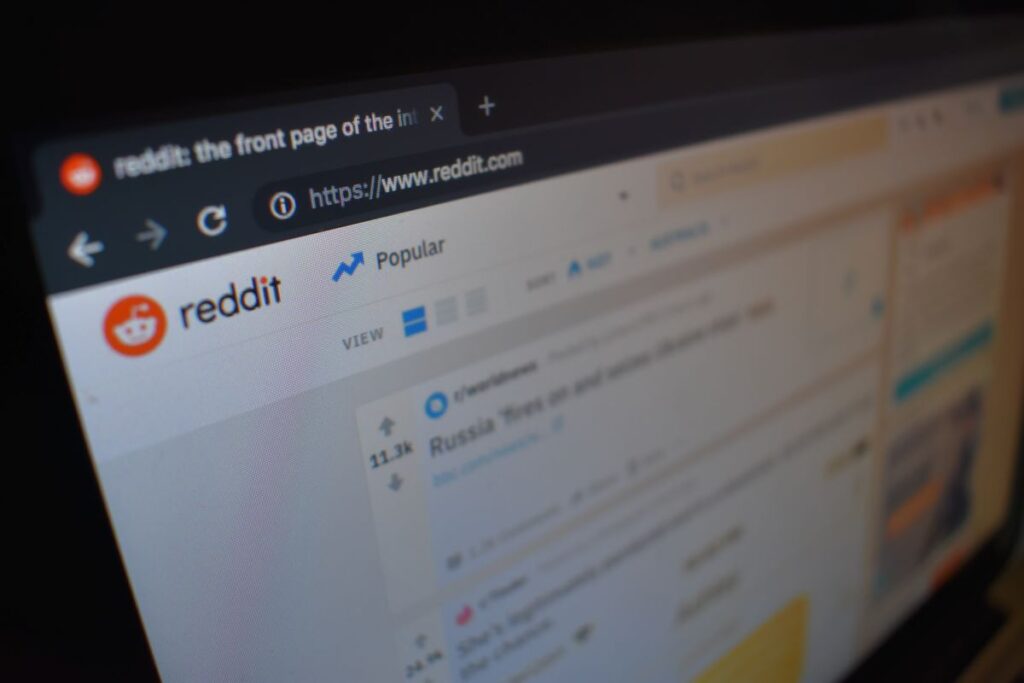
With calorie and fitness-tracking apps more accessible than ever, so is the concern for how this technology might be impacting on people with eating disorders. Positive associations between these technologies and eating disorder symptoms have been found (Embacher Martin, McGloin & Atkin, 2018; Hefner et al., 2016; Plateau, Bone, Lanning & Meyer, 2018; Simpson & Mazzeo, 2017), but overall research is inconsistent. Therefore, an investigation into how these apps may be affecting those with eating disorders is paramount.
One explanation for inconsistencies within the research could be the use of narrow measurements to explore how individuals engage with these applications, which may miss distinct patterns indicative of eating disorders. Qualitative research has attempted to understand the complex engagement associated with these applications, with recent studies (Eikey et al., 2017; Eikey & Reddy, 2017) offering valuable insights into the cognitions, emotions and behaviours associated with their use. However, limited by small sample sizes, these studies have been unable to capture the full range of use of these applications. This is important, as establishing how individuals with eating disorders use these technologies might allow for more precise research questions to be generated, along with the development of more rigorous interventions.
Therefore, this study (McCaig et al, 2019) aimed to generate qualitative evidence to further understand user engagement with a popular calorie and exercise-tracking app called MyFitnessPal (Under Armour Inc., 2019).

Applications aimed at tracking exercise and calories, such as MyFitnessPal, might be harmful for people with eating disorders.
Methods
Extending upon previous research (McCaig et al., 2018), the authors of this study extracted public comments from the discussion site Reddit, left between May 2015 and January 2018. Comments about MyFitnessPal were extracted from three eating-disorder related forums and were identified if they contained at least one of the following terms: “mfp”, “fitness pal” “fitnesspal”. MyFitnessPal was chosen due to it being at the centre of previous research on the topic, alongside being the most downloaded app of its kind (Ferrara et al., 2019), recording both calories and exercise.
Once extracted, the comments were inductively thematically analysed using Braun and Clarkes (2006) six-step guide. The authors were interested in themes at the semantic level, to understand the commenter’s experiences and create themes that were clear from the comments.
Results
In total, 1,695 comments mentioning MyFitnessPal were extracted from 920 commenters. Three themes were identified; preventing misuse, accuracy and psychosocial factors.
1. Preventing Misuse
Interventions
Users reported MyFitnessPal implementing measures if they demonstrated eating disorder-related symptoms or behaviours, such as having a low goal weight or recording a low daily calorie intake. Measures implemented by MyFitnessPal included restricting, suspending, or deleting user accounts, however, measures were not always implemented.
Circumventing interventions
When MyFitnessPal implemented these restrictive interventions, users described ways to evade them, such as altering personal characteristics to be allowed a lower weight/goal or switching to another app or recording method.
2. Accuracy
Inaccuracy
Many users reported mistrusting MyFitnessPal to accurately record calorie and fitness information.
Improving accuracy
Users described ways of improving the accuracy of MyFitnessPal. These included checking the information themselves or syncing the app with another more reliable device.
Deliberate misrecording
Some users also reported deliberately entering inaccurate data into the app, seemingly to facilitate weight loss. This included over-recording the number of calories eaten, under-recording exercise, and not recording episodes of purging.
3. Psychosocial factors
Cognition and affect
Thoughts and feelings associated with the app were mixed, with some users reporting positive feelings, yet others reporting negative feelings, such as feelings of competitiveness or feeling judged. Those recovering from an eating disorder reported feelings of addiction towards the app and ruminating thoughts about food.
Behaviour
Some users reported that using the app prevented them from bingeing or purging, whilst others reported that the app facilitated a relapse and they therefore needed to delete it from their device.
Interpersonal factors
A social element of sharing usernames with others to track progress was described by some. However, a group of users reported negative consequences associated with this (i.e. feeling criticised by others) leading them to make their use of the app private.

MyFitnessPal enforced measures to discourage eating disorder-related behaviours, however, these were not effective, with users easily finding ways to evade them.
Conclusions
The themes identified in this study represent the many ways in which users engage with MyFitnessPal and the psychosocial factors associated with the application. Users described interventions employed by MyFitnessPal in response to unhealthy use of the app and the ways they worked around these (Preventing Misuse).
Furthermore, doubts around MyFitnessPal’s ability to accurately record information was a concern for many users (Accuracy), with ways to correct these perceived inaccuracies described. For instance, the deliberate misrecording of information was also used to further facilitate weight loss. Therefore, improving the accuracy of MyFitnessPal would unlikely lead to real differences in user behaviour, a conclusion which has been found in previous research (McCaig, Hawkins & Rogers, 2016).
Finally, a variation of positive and negative psychosocial factors were found to either influence or be influenced by MyFitnessPal, along with eating disorder-related symptoms/behaviours. This variation has been suggested by the authors to be down to moderators between engagement with the application and eating disorder-related symptoms. A key example of this being the motivational stage of change regarding eating disorder recovery (McCaig et al., 2019).

Users doubted the accuracy of MyFitnessPal and employed strategies to counter these perceived inaccuracies.
Strengths and limitations
The strengths of this study include:
- A large sample size of over 1,600 comments over a period of three years were extracted, which is much larger than previous research
- The use of public comments meant the information gathered was not influenced by the researchers in any way. This means that comments were in users’ own words on a topic they had freely chosen to discuss
- The relevance of the research to those with eating disorders was increased with the use of specific eating disorder-related forums rather than those more generally related to weight-loss or MyFitnessPal
- The authors choice to study this application meant they were likely to gather a more representative sample, as this app not only measures both calories and exercise but is also the most commonly downloaded (Ferrara et al., 2019) and discussed app (McCaig et al., 2018) on eating disorder forums.
However, this study had some limitations:
- There may have been a selection bias, due to this research only choosing to look at engagement with one app. Similarly, there may also have been a selection bias for those choosing to comment on the forum, compared to those who did not
- Many comments about MyFitnessPal might have been missed as comments were only extracted if they contained one of three pre-specified terms. Therefore, anyone referring to the app in another way would have been missed
- This methodology meant researchers were unable to follow-up with participants on interesting or unclear topics. This also meant that demographic information was not collected, which may have provided further valuable insight.

By extracting comments from online forums, comments left by users were in their own words and free from any researcher influence. This did mean, however, that researchers could not ask participants further questions to clarify important points.
Implications for practice
This research presents novel findings related to how users engage with MyFitnessPal, which may allow for the development of a standardised measure of engagement to be developed in relation to eating disorder psychopathology. The behaviours identified in this research should be considered in the future and may help to explain earlier null findings between the frequency of use and eating disorder symptomatology (Plateau et al., 2018). By improving the validity of such measures, the specific aspects of engagement associated with eating disorder symptoms can be identified. This would allow tailored and targeted interventions to be developed for those displaying these behaviours alongside further information about how individuals with eating disorders might be using these apps.
Furthermore, the results of this study demonstrate the importance of introducing alternative and less punitive types of interventions to these apps. The findings indicate that users will either evade them or jump ship if interventions interrupt their use of the app, thus proving futile in preventing unhealthy behaviours. Additionally, MyFitnessPal was found to only offer psychoeducation after a user had been banned from the application. Future research could therefore identify whether psychoeducation interventions employed into the everyday use of the app are more effective than current measures.
Finally, the authors suggest future research should try to establish a causal relationship between app engagement and the psychosocial factors identified in this study. Understanding how these technologies may influence eating disorders is more important now than ever, with mental healthcare moving further into the digital world. Therefore, understanding how digital applications are used in these populations may not only help to make them safer, but may also support recovery rather than psychopathology.

The findings of this research may now be used to create valid, quantitative measures to identify the aspects of app engagement associated with eating disorder symptoms and behaviours.
Statement of interests
None.
Links
Primary paper
McCaig, D., Elliot, M. T., Prnjak, K., Walasek, L., & Meyer, C. (2019). Engagement with MyFitnessPal in eating disorders: Qualitative insights from online forums. International Journal of Eating Disorders, 1-8.
Other references
Braun, V., & Clarke, V. (2006). Using thematic analysis in psychology. Qualitative Research in Psychology, 3(2), 77-101.
Eikey, E. V., & Reddy, M. C. (2017). “It’s definitely been a journey”: A qualitative study on how women with eating disorders use weight loss apps. Paper presented at the Proceedings of the 2017 CHI Conference on Human Factors in Computing Systems- CHI’17.
Eikey, E. V., Reddy, M. C., Booth, K. M., Kvasny, L., Blair, J. L., Li, V., & Poole, E. S. (2017). Desire to be underweight: Exploratory study on a weight loss app community and user perceptions of the impact of disordered eating behaviours. JMIR Mhealth and Uhealth, 5(10), e.150.
Embacher Martin, K., McGloin, R., & Atkin, D. (2018). Body dissatisfaction, neuroticism, and female sex as predictors of calorie-tracking app use amongst college students. Journal of American College Health, 66(7), 608-616.
Ferrara, G., Kim, J., Lin, S., Hua, J., & Seto, E. (2019). A focused review of smartphone diet-tracking apps: Usability, functionality, coherence with behaviour change theory, and comparative validity of nutrient intake and energy estimates. JMIR Mhealth and Uhealth, 7(5), e9232.
Hefner, v., Dorros, S. M., Jourdain, N., Liu, C., Tortomasi, A., Greene, M. P., … & Alverez, C. (2016). Mobile exercising and tweeting the pounds away: The use of digital applications and microblogging and their association with disordered eating and compulsive exercise. Cogent Social Sciences, 2(1), 1-11.
McCaig, D., Bhatia, S., Elliot, M. T., Walasek, L., & Meyer, C. (2018). Text-mining as a methodology to assess eating disorder-relevant factors: Comparing mentions of fitness tracking technology across online communities. International Journal of Eating Disorders, 51(7), 647-655.
McCaig, D., Hawkins, L., & Rogers, P. (2016). Licence to eat: Information on energy expended during exercise affects subsequent energy intake. Appetite, 107, 323-329. [Science Direct Abstract]
Plateau, C. R., Bone, S., Lanning, E., & Meyer, C. (2018). Monitoring eating and activity: Links with disordered eating, compulsive exercise, and general wellbeing among young adults. International Journal of Eating Disorders, 51(11), 1270-1276.
Simpson, C. C., & Mazzeo, S. E. (2017). Calorie counting and fitness tracking technology: Associations with eating disorder symptomatology. Eating Behaviours, 26, 89-92. [Science Direct Abstract]
Under Armour Inc. (2019). MyFitnessPal.com: Free calorie counter. Diet & Exercise Journal.
Photo credits
- Photo by S O C I A L . C U T on Unsplash
- Photo by Markus Spiske on Unsplash
- Photo by Sarah Kilian on Unsplash
- Photo by Kon Karampelas on Unsplash
- Photo by Glenn Carstens-Peters on Unsplash
